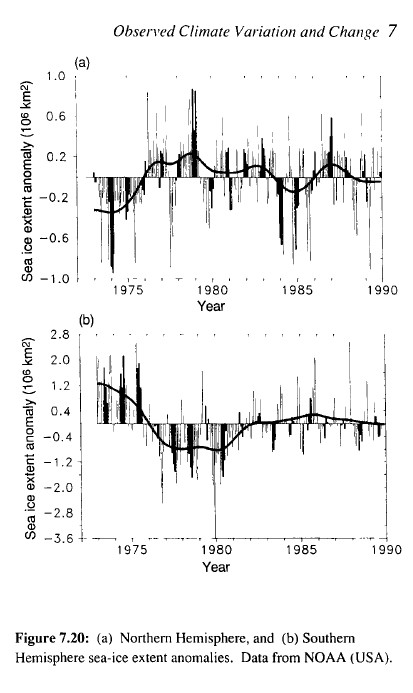Antarctic ice area once again set a post-1979 record high for the date today, and is closing in on the September 20, 2007 post-1979 record high.
Does that date sound familiar? It should, because it was the same week as the previous post-1979 record low Arctic ice area.
Global warming theory requires that both poles warm, but we are seeing the exact opposite – the poles move opposite each other.
And prior to 1979, Arctic ice was increasing, while Antarctic ice was decreasing.
It is quite clear that the mechanism driving ice gain in Antarctica is the same one driving ice loss in the Arctic, but climate scientists refuse to think about this. Their brains are locked in CO2 stupidity hell.




My sincerest apologies to the late John Lennon…
“Imagine”
Imagine there’s no Hansen
It isn’t hard to do
Nothing to shill or lie for
And no Michael Mann too
Imagine all these people
Giving us some peace…
You may say I’m a denier
But I’m not the only one
I hope someday you’ll join us
And blame climate on the Sun
Imagine no alarmists
I wonder if you can
No screed allowing plunder
A brotherhood of man
Imagine no more people
Scaring all the world…
You may say I’m a denier
But I’m not the only one
I hope someday you’ll join us
And put focus on the Sun
Nice one Gator!
“It is quite clear that the mechanism driving ice gain in Antarctica is the same one driving ice loss in the Arctic…”
Nothing is clear in this field Steve. You’d be better to drop the hyperbole and stick to the scepticism (my 2c worth). Yes, there is an intriguing set of coincidences here. And if an analysis is done, perhaps even a correlation. But correlation is not causation, except in climate science. And that’s how the field got into the huge mess it currently finds itself in.
I “better” do the right thing, which is exactly what I am doing.
“Though I speak with the tongues of men and of angels, and have not charity, I am become as a sounding brass, or a tinkling cymbal. And though I have the gift of prophecy, and understand all mysteries, and all knowledge; and though I have all faith, so that I could remove mountains, and have not charity, I am nothing. And though I bestow all my goods to feed the poor, and though I give my body to be burned, and have not charity, it profits me nothing.
“Charity suffers long, and is kind; charity envies not; charity vaunts not itself, is not puffed up. Does not behave itself unseemly, seeks not her own, is not easily provoked [. . .]; bears all things, believes all things, hopes all things, endures all things.
“Charity never fails: but wherever there be prophecies, they shall fail; wherever there be tongues, they shall cease; wherever there be knowledge, it shall vanish away. For we know in part, and we prophesy in part. But when that which is perfect is come, then that which is in part shall be done away.
“When I was a child, I spoke as a child, I understood as a child, I thought as a child: but when I became a man, I put away childish things. For now we see through a glass, darkly; but then face to face: now I know in part; but then shall I know even as also I am known.”
“And now abides faith, hope, charity, these three; but the greatest of these is charity.”
The Arctic and Antarctic each respond oppositely to the same global forcing mechanism because one is an ocean surrounded by land and the other is land surrounded by ocean.
The key is the degree of jetstream meridionality or zonality.
In theory, more zonal jets whizzing faster round the poles tend to isolate the poles from flows of air in and out so the poles cool.
That works fine for the Antarctic as we have seen during the late 20th century but zonal jets are also associated with warmer ocean surfaces so that warmer water is able to flow into the Arctic Ocean to melt the ice and warm the air.
So Antarctic ice increases as Arctic ice decreases.
In contrast, more meridional jets allow more frequent flows of warm air in and cold air out from the poles which then warm up whilst mid latitudes cool down.
The South Pole gets warmer but meridional jets are associated with cooler ocean surfaces so after a number of years (say 10 to 15) the supply of warm water to the Arctic Ocean is cut off and the North Pole cools whilst the South Pole warms.
In fact the South Pole station has been warming up since the jets began to become more meridional around 2000. For the previous 20 years of more zonal jets the South Pole station actually got colder.
So we are now in a transition period where we just need to await the end of the current positive AMO whereupon the warm water reaching the Arctic will decline and the Arctic sea ice will begin to recover. Meanwhile the Antarctic ice should peak soon and begin to decline.
The Antarctic Peninsula behaves differently but that is off topic for the moment.
Reblogged this on materread.